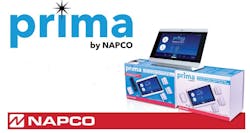HID: Suggest Credential Upgrades to Satisfy Security, Budget Demands
A potentially huge opportunity exists for locksmiths and security pros. The all-important question: How do you tap into it?
That was the gist of a webinar held by HID Global, which is part of ASSA ABLOY, during which HID released data from its annual survey of electronic access control (EAC) end users in various markets, including education, health care, manufacturing and government.
Matt Winn, director of marketing and communications at HID, says the most significant data point in the 2020 survey was that only 43 percent of those surveyed reported that their security system met or exceeded their requirements. This was down significantly from 73 percent just two years earlier.
“The sheer decline and number of respondents that said the system met their needs is kind of scary,” Winn says. He adds that the top three immediate security concerns were physical security breach, disaster response (including to pandemics) and insider threats, which call for advanced levels of security.
The most common age of EAC devices, such as readers, controllers and credentials, by those surveyed was 3–6 years (more than 40 percent across the board). “Manufacturers have made constant product upgrades to help people upgrade their systems, but those upgrades aren’t being made,” he says.
Winn notes that more than half of respondents plan to upgrade those products, plus access control software, in 1–6 years. Although HID’s survey covered only about 1,000 participants, simple math would indicate an upgrade market potential in the billions of dollars.
The problem, unsurprisingly, is cost combined with budgets that have been made tighter in the wake of the COVID-19 pandemic. The challenge, Winn says, is “to demonstrate the value of investing in modern access solutions, improving the user experience, and to improve security over the long haul.”
HID’s solution is upgraded credentialing, particularly through mobile credentials, which can’t be copied or accessed as easily as older so-called legacy technology, such as 125-kilohertz prox cards. Mobile credentials also satisfy other demands, including the increased demand for touchless access and the ability to issue credentials from a remote location.
Upgraded credentialing also handles concerns about cost in two ways, says Luc Merredew, director of PACS product marketing at HID Global. First, it allows organizations to take advantage of existing EAC equipment. This is noteworthy given budgetary constraints.
“The basic approach we’d recommend [for an upgrade] is to swap out the readers first,” Merredew says. It’s often a simple retrofit to go from a basic card reader to one that has radio-frequency ID and can handle different types of credentials, including mobile. After making the upgrade, organizations can migrate credentials to new form factors over time.
Second, upgraded credentials are less expensive than another form of touchless security clearance — facial recognition. Although Merredew is a fan of the technology, he says the cost of facial recognition doesn’t justify making it standard just yet.
Most important, however, upgraded credentialing works. “Most users won’t tell the difference between a 1990s card and a 2020 card,” Merredew says. “One is secure, and one is inherently insecure, but the user experience is the same.”
Will Christensen | Senior Editor
Will Christensen is senior editor at Locksmith Ledger International. He has been an editor and reporter at magazines and newspapers for more than 30 years.






